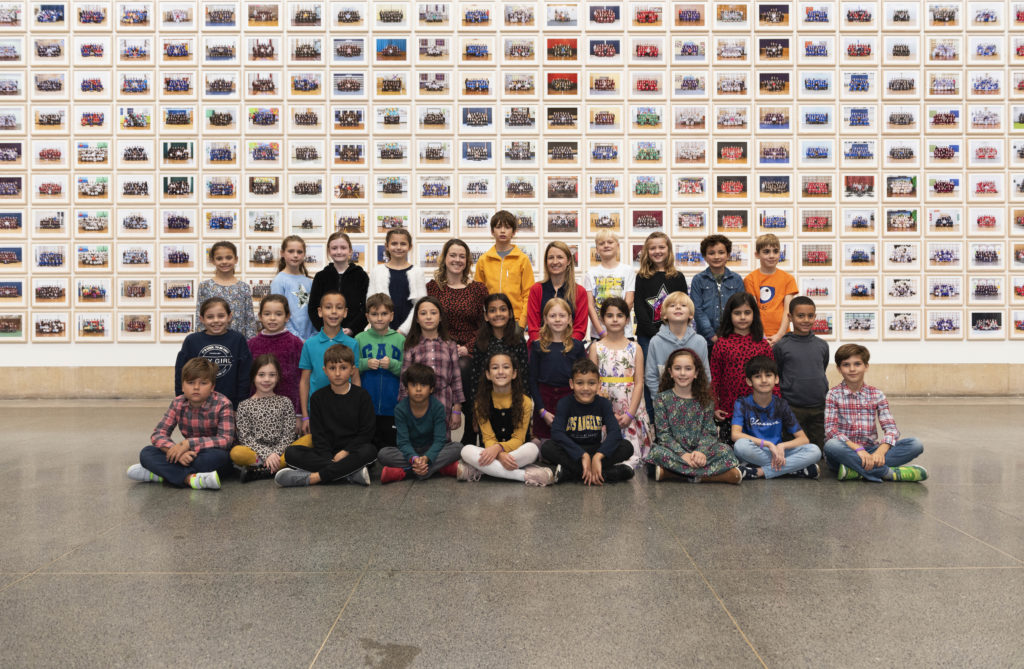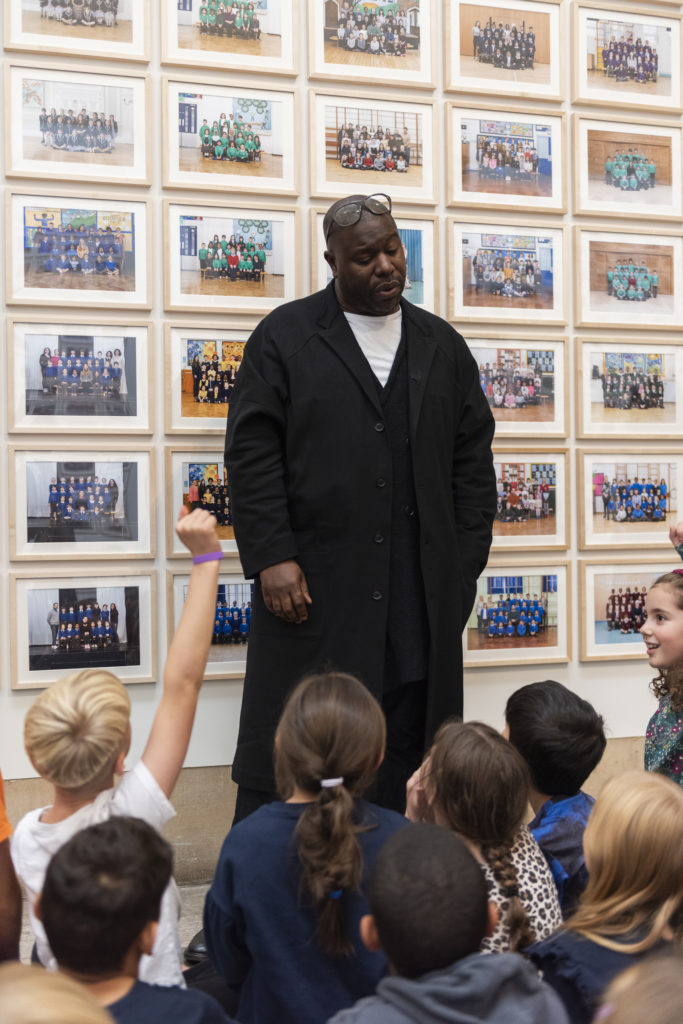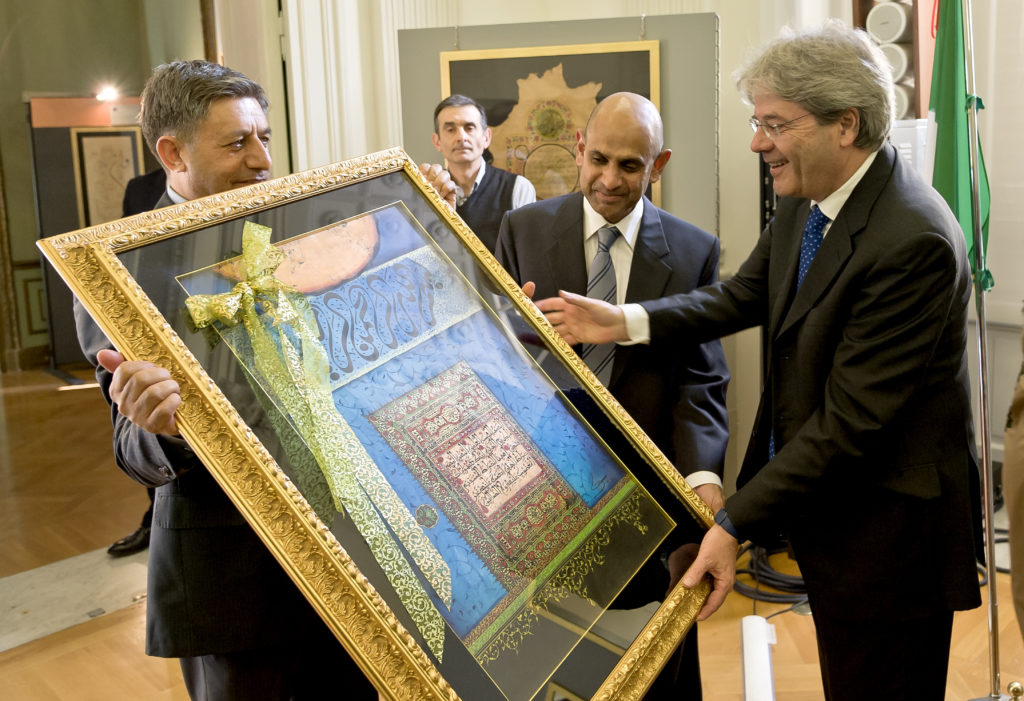Art Industry News is a daily digest of the most consequential developments coming out of the art world and art market. Here’s what you need to know on this Tuesday, November 12.
NEED-TO-READ
Smithsonian’s Lonnie Bunch on How to Go Beyond DC – The new secretary the Smithsonian Institution sits down with The Art Newspaper to discuss his new role as well as his book, a mix of history and autobiography entitled A Fool’s Errand: Creating the African American History and Culture Museum in the Age of Bush, Obama, and Trump. Now at the helm of the Smithsonian, the former director of NMAAHC says he is focused on how the institution can reach the millions of people who do not visit Washington, DC. Asked about self-censorship in the past and the possibly of upsetting members of Congress in the future, Bunch says: “If there might be a controversy, I want to know about it ahead of time, so I can offer support.” (The Art Newspaper)
A New Study Says Art Can Be More Cost Effective Than Medical Treatment – A new study carried out by the World Health Organization shows that the arts are proven to be beneficial for mental and physical health. (But also please don’t exchange your pills for paintbrushes—listen to your doctor!) The Health Evidence Synthesis surveyed more than 900 publications about the impact performing arts, literature, online arts, and visual arts can have, and separated the results into two categories: preventative and promotional. The study includes the finding that music can be inspirational to HIV patients and art therapy can assist cancer patients in combating some of the adverse side effects of treatment. (Press release)
Are Diplomats Stealing Art? – A number of cases involving diplomatic officials and stolen art have raised questions about whether embassy officials are abusing their privileges. In Egypt, Ladislav Otakar Skakal, a former honorary consul at the Italian embassy in Cairo, is accused of smuggling more than 21,000 artifacts out of the country, some of which were later discovered in security deposit boxes. Meanwhile, reports have emerged of valuable art missing from the Venezuelan embassy in Washington, DC. One cultural property lawyer sounds a note of caution: “Once an object has been illegally moved across borders, that blemish on the object won’t disappear just because you are a diplomat.” (TAN)
UK Returns Looted Sculptures to Afghanistan – Looted ancient artifacts have finally returned to Afghanistan 17 years after they were first seized in London. The nine heads, including a sculpture of Buddha, are now in the National Museum in Kabul. During the lengthy investigation, in which no charges were made, the sculptures were stored at the British Museum. The pieces were removed by the Taliban from ancient monasteries around 2001, and were then sold on the black market. They were intercepted by police checking for drugs when they arrived at Heathrow from Pakistan. (Evening Standard)
ART MARKET
Meadows Museum Teams Up With ARCO – The university museum of Spanish art in Dallas has teamed up with the foundation that runs the Madrid art fair ARCO. As part of the six-year collaboration, one Spanish artist will get a solo show at the Meadows and a four-month residency every other year, starting this fall with Secundino Hernández. (Art Daily)
London Museum Sells an Old Master at Auction – A museum run by one of London’s richest local authorities is selling a 1785 landscape by Joseph Wright of Derby. The oil painting, which carries an estimate of $128,000 to $193,000, will be offered at Sotheby’s on December 4. The Royal Borough of Kensington and Chelsea tells Artnet News that it was not part of the core collection of the Leighton House Museum. For more than a decade, it was on loan to the Tate. (Sotheby’s)
COMINGS & GOINGS
Netherlands’ Prix de Rome Announces Winner – The winner of the 2019 Prix de Rome, which honors cultural producers under 40, is British artist Rory Pilgrim. He won for The Undercurrent (2019), a film about a small community in Idaho whose lives are affected by issues as far-ranging as gender roles and climate change. Pilgrim will receive $44,000 and a residency at the American Academy of Rome. (Artforum)
Bangkok Biennial Artists Announced – The second Bangkok Art Biennale is scheduled to return on October 10, 2020. Under the theme “Escape Routes,” the Thai biennial has released a first round of confirmed artists, which includes Rirkrit Tiravanija, Bill Viola, Dinh Q. Le, and Anish Kapoor, among others. (Press release)
Film Advocate Sally Dixon Has Died – The arts administrator, curator, and advocate of American experimental film died on November 5 at age 87. Dixon founded the film department at the Carnegie Museum of Art in 1970—only the second department of its kind at an American museum. (Artforum)
Gardner Museum Names Assistant Curator – Diana Greenwald has been appointed assistant curator of the collection at the Isabella Stewart Gardner Museum in Boston, where she will focus on works from the 19th and early 20th centuries. Most recently, Greenwald worked for two years as a curatorial fellow at the National Gallery of Art in Washington, DC. (Press release)
FOR ART’S SAKE
Extinction Rebellion Dropped a Miniature House Into the Thames – The climate activist group Extinction Rebellion organized a demonstration over the weekend that included floating a miniature sculpture of a house into the Thames River as part of an initiative called “Act Now: Our House Is Flooding.” The action was aimed in part at Boris Johnson’s statements that flooding in the UK doesn’t rise to the level of a “national emergency,” which the group disputes, citing the recent floods in Derbyshire and Yorkshire that resulted in one death and multiple rescue efforts. (Designboom)
Boy Thrown From the Tate Is Recovering – The six-year-old boy who was thrown from Tate Modern’s viewing platform in August can now move his legs, his parents say. The young French tourist was hospitalized after being thrown from the 10th-floor balcony and was moved from the intensive care unit to a rehabilitation center last month. Jonty Bravery, an 18-year-old who is facing attempted murder charges for the act, is due to appear at a plea hearing in December. (CNN)
Steve McQueen Unveils His Giant School Photo Shoot – A group of third grade students gathered at the Tate Britain for a special tour of Steve McQueen’s latest project, “Year 3,” which opens today at the London institution. The children were some of the 76,146 the film director and Turner Prize-winner documented as a part of his epic effort to capture third graders at 1,504 of London’s primary schools. The images are also reproduced on billboards across London, which will be on view from November 4 through November 18. (Press release)

Little Ealing Primary visiting Steve McQueen Year 3 at Tate Britain © Tate. Photo: David Lennon

Little Ealing Primary visiting Steve McQueen Year 3 at Tate Britain © Tate. Photo: David Lennon










